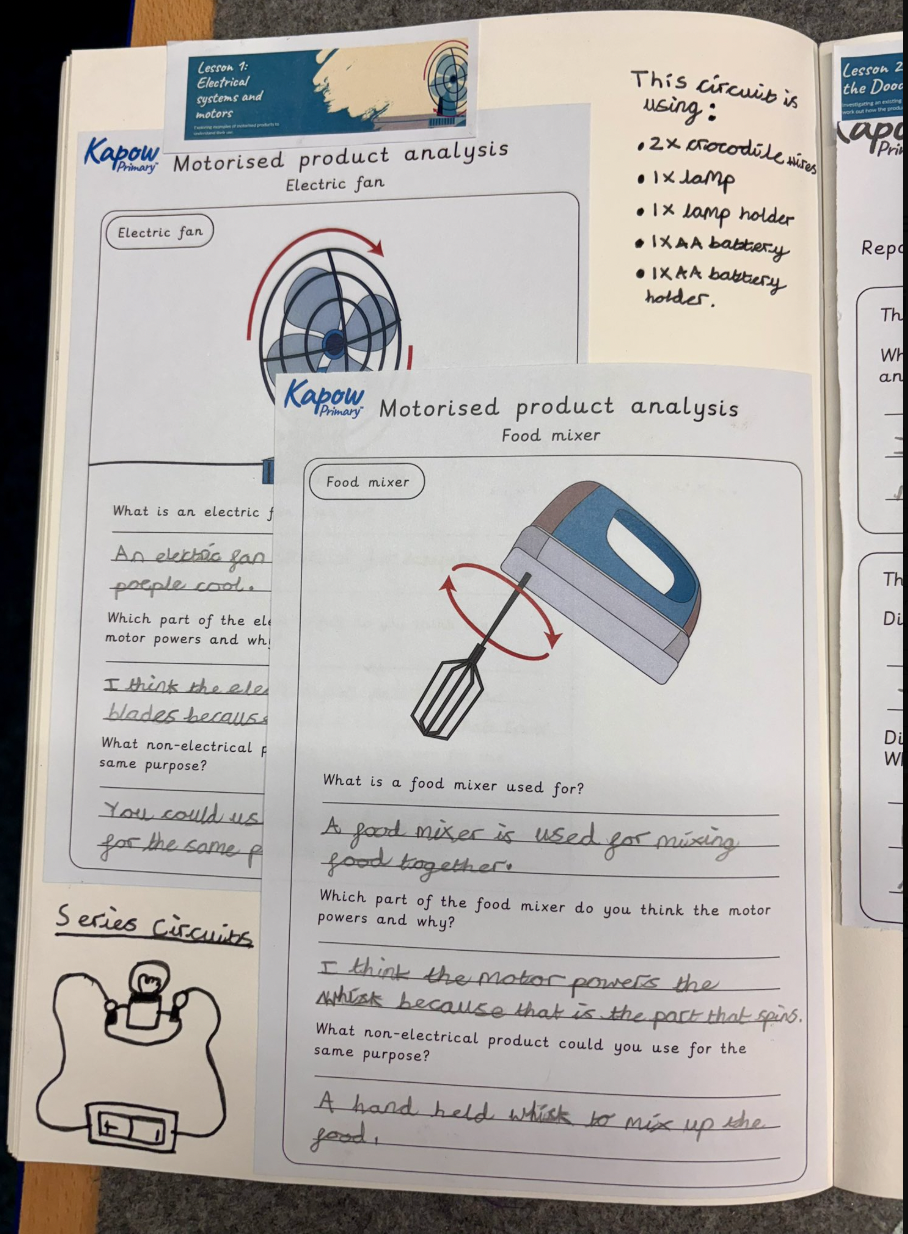Learning objective
- To understand how motors are used in electrical products.
Success criteria
- I can identify
This content is for subscribers only. Join for access today.
National curriculum
Design and technology
Evaluate
Pupils
This content is for subscribers only. Join for access today.
Cross-curricular links
Science
Electricity
-
This content is for subscribers only. Join for access today.
Before the lesson
This content is for subscribers only. Join for access today.
Lesson plan
Recap and recall
Before starting this unit, you might want to check that children can recall: An electrical system is a group of parts (components) that work together to transport electricity around a circuit. An electrical product uses an electrical system to function. The name and appearance of a bulb, battery, battery holder and crocodile wire to build…
This content is for subscribers only. Join for access today.
Extended-mode explainer videos
How to extend your display to view the lesson page and preseantion mode simultaneously. Choose your operating system below to watch the video
If you need further support with extending your display,
please contact [email protected].
Extended-mode explainer video: For Mac
Extended-mode explainer video: For Windows
Adaptive teaching
Pupils needing extra support
Could be paired with other pupils when completing the circuit and motorised product analysis; could have a piece of card attached to the end of the motor axle to show that the axle spins when powered.
Pupils working at greater depth
Should be challenged to suggest other motorised products and justify why they think they operate with a motor (rotational movement, axle, wheels etc.); could suggest other reasons a motor is used other than electric rotation; could fill in the Activity Doodler project front cover as an extension task.
This content is for subscribers only. Join for access today.
Assessing progress and understanding
Pupils with secure understanding indicated by: identifying simple
This content is for subscribers only. Join for access today.
Vocabulary definitions
-
circuit
A collection of components that make an electrical system.
-
circuit component
One of several parts that complete a circuit (e.g. bulb).
This content is for subscribers only. Join for access today.
Example work

St Mary's Catholic Primary School, Crewe
This content is for subscribers only. Join for access today.
In this unit
Assessment - D&T Y5: Electrical systems: Doodlers
Lesson 1: Electrical systems and motors
Lesson 2: Meet the Doodlers
Lesson 3: Doodler design and construction
Lesson 4: Doodler DIY kits

